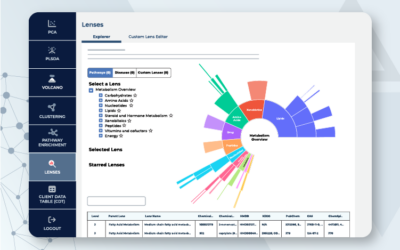Drug metabolism varies between individuals due to several factors, including genetics, age, sex, diet, and overall health status. The study of drug metabolism plays an essential role in personalized medicine, which aims to tailor treatment to an individual’s specific genetic profile. By identifying genetic variations that affect drug response, healthcare providers can make more informed decisions about which medications to prescribe and at what dose.
CYP2C19 Ultrarapid, Intermediate, and Poor Metabolizers
The cytochrome P450 (CYP450) liver enzymes are responsible for the metabolism of over 90% of drugs in current clinical use. CYP450 genetic variations can lead to inter-individual differences in enzyme activity.1 These genetic variations can affect the rate at which drugs are metabolized, leading to differences in drug efficacy and toxicity. CYP2C19 is a member of the CYP450 enzyme family, which is responsible for the metabolism of a wide range of drugs and other xenobiotics. Specifically, CYP2C19 is responsible for metabolizing proton pump inhibitors, antidepressants, and anti-epileptic drugs.1 CYP2C19 is known for its genetic polymorphisms, meaning that different genetic variations of the enzyme exist in the population. These genetic variations can lead to differences in enzyme activity, which can affect an individual’s ability to metabolize certain drugs. The CYP2C192 and CYP2C193 alleles are known to result in reduced enzyme activity, while the CYP2C1917 allele results in increased enzyme activity. Individuals who carry two copies of the CYP2C192 or CYP2C19*3 alleles are considered poor metabolizers and may require lower doses of drugs metabolized by CYP2C19 or alternative treatments.2
Probe Drugs Measure CYP450 Activity but are Invasive and not Suitable for All Populations
Probe drugs are commonly used to measure the activity of CYP450 enzymes in vivo to predict drug-drug interactions, toxicity, and efficacy. Probe drugs are typically metabolized by the enzyme or enzyme system of interest, and the rate or extent of metabolism is used as a measure of enzyme activity. However, using probe drugs in assays can be invasive, complicated, and inconvenient, making it difficult to use them on a large scale. This is because they require the consumption of test drugs not intended for treatment and require multiple blood tests. Additionally, probe drugs are not always available or suitable for all populations, such as pediatric, geriatric, or pregnant individuals, due to possible drug-induced toxicity, leading to limitations in their use. Therefore, better approaches to measure CYP450 activity are of great necessity.
Metabolomics Can Identify Biomarkers of CYP450 Enzymes
Metabolomics is the study of small molecule metabolism, including the characterization of the metabolites produced by the body in response to a particular drug. The metabolites produced by CYP450 enzymes, such as CYP2C19, are often used as biomarkers to track the activity of these enzymes. These biomarkers can provide a better insight into drug metabolism compared to probe drugs and can be used to predict drug-drug interactions, toxicity, and efficacy. The key advantages of these biomarkers are that they can be used in difficult-to-study populations such as children or pregnant women or in patients for whom giving a probe drug is not feasible, or they can be used to perform retrospective studies or predict the potential for drug–drug interactions. An example of a CYP2C19 biomarker is S-Mephenytoin. CYP2C19 catalyzes the formation of S-mephenytoin, and the ratio of S-mephenytoin to mephenytoin in the blood can be used as a biomarker of CYP2C19 activity.3 The Metabolon Global Discovery Panel can help identify novel biomarkers of CYP2C19 activity. Metabolon can provide a noninvasive means of CYP2C19 phenotyping and improve current drug therapy mediated by CYP2C19 metabolism.
References
- Hirota T, Eguchi S, Ieiri I. Impact of genetic polymorphisms in CYP2C9 and CYP2C19 on the pharmacokinetics of clinically used drugs. Drug Metab Pharmacokinet. 2013;28(1):28-37. doi:10.2133/dmpk.dmpk-12-rv-085
- Dean L, Kane M. Clozapine Therapy and CYP Genotype. National Center for Biotechnology Information. 2012.
- Tamminga WJ, Wemer J, Oosterhuis B, et al. Mephenytoin as a probe for CYP2C19 phenotyping:effect of sample storage, intra-individual reproducibility and occurrence of adverse events. Br J Clin Pharmacol. May 2001;51(5):471-4. doi:10.1046/j.1365-2125.2001.01331.x






